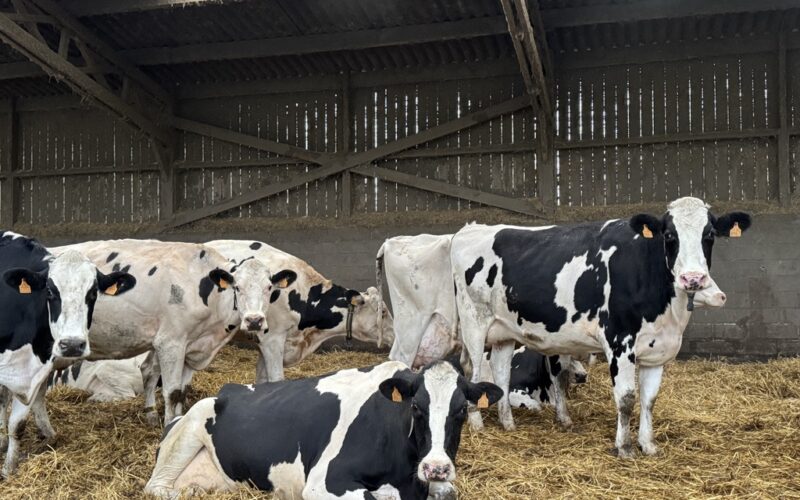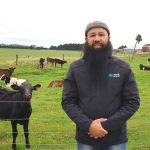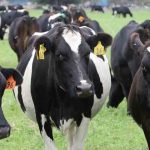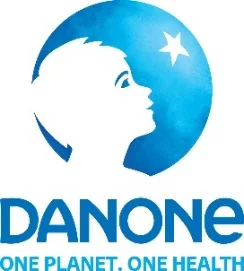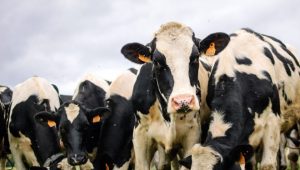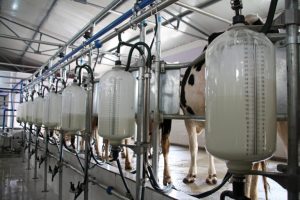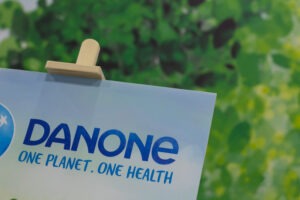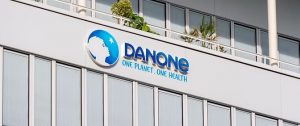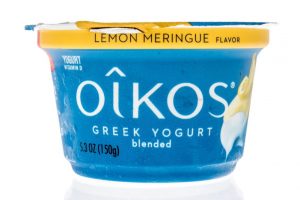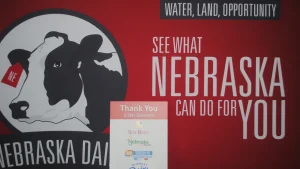
Seven years ago Danone launched a carbon stocktake on this Conteville farm, giving its suppliers a head start on cutting carbon.
The foresight of their milk processor, Danone, gave Sébastien and Aline Catoir a head start on improving their carbon footprint on their dairy farm in Conteville, France. By pulling a few levers, they have improved from 0.84kg of carbon dioxide equivalent per litre of milk (kgCO2/L) to 0.78 kgCO2/L.
“Danone have been a forerunner of this theme. They started the process with us in 2017 to do a stocktake of where our carbon footprint was and how to improve it,” Sébastien said.
“There were three areas we identified we could improve initially and others we have also worked on that have helped us reduce our emissions.”
With support from Danone and others in their network, they tackled things like reducing the age that their heifers first calve. It had been up to 32 months and is currently 27 months heading closer to 24 eventually.
Another area they improved was installing a pre-cooling unit, which has reduced their energy consumption. The milk enters the system at 37degC and the pre-cooler brings it down to 27degC, which saves activating the cooling unit that would use more energy to cool the 10 degrees.
The third key area they focused on was their race system to allow easier grazing.
The farm is 120 hectares with 33ha of pasture and only 10ha of it dedicated to the dairy cows for grazing. The cows have year-round access to the barn, but during the warmer months, they graze on pasture, usually from mid-April to the end of October, extending to mid-November if weather permits.
“Grazing has reduced our carbon footprint as we buy less feed and we don’t have to harvest the grass as the cows are eating it directly,” Sébastien said.
“We also have less effluent in the barn to deal with when they’re on the pasture.”
They are milking 60 Prim’Holstein cows, which produce 610,000 litres of milk per year, roughly 10,000l per cow. They are working to reduce inputs and strive for greater self-sufficiency by using milk to feed the calves and growing a variety of crops.
Given the limited 10ha of pasture, they continue to receive supplementary feed throughout the year.
“The system we’ve implemented allows us to have higher production despite buying less feed.”
Their management plan from Danone also suggested they plant more hedges, to provide shade and a windbreak and build biodiversity.

“We planted 630 meters of additional hedges over the 6km that the farm already had, which saves us 12 tonnes of carbon dioxide equivalent.”
Alongside their carbon footprint, the farm is heavily focused on animal health and biosecurity. Blue tongue is becoming a big problem in Europe as, with changes to the climate impacting the lifespan of the midges that transmit the disease, more farmers are battling it.
The Catoirs have started vaccinating for blue tongue and respiratory diseases in their calves, prompted by the humid and cold weather in their region that heightens the risk of illness.
They have also made a big effort with mastitis as they were experiencing a clinical case per cow on average each year. This has dropped 50% since beginning a vaccination programme. A recent purchase of a Mastatest machine helps determine whether antibiotics are needed and what type could be effective when a cow does get mastitis.
Blanket dry cow therapy is under the spotlight in France so they are trying to reduce their usage and using more internal teat sealant.
“Our somatic cell count is usually around 100-150,000 and we try to maintain it at that level.”
The farmers around Sébastien’s farm typically work around 70 hours per week and their income fluctuates. Some seasons the farm barely makes a profit; in others they may only make €40,000 (roughly NZ$80,0000) with €30,000 to €35,000 being government subsidies.
Most of the farms in France have diverse business models, deriving income from more than just milk production. For example, arable farming, solar panel power production and more recently carbon credits.
Despite the challenges, Sébastien and Aline enjoy their lifestyle and working with animals. And they’ll continue to streamline their system and improve efficiencies.
You can now read the most important #news on #eDairyNews #Whatsapp channels!!!
🇺🇸 eDairy News INGLÊS: https://whatsapp.com/channel/0029VaKsjzGDTkJyIN6hcP1K
